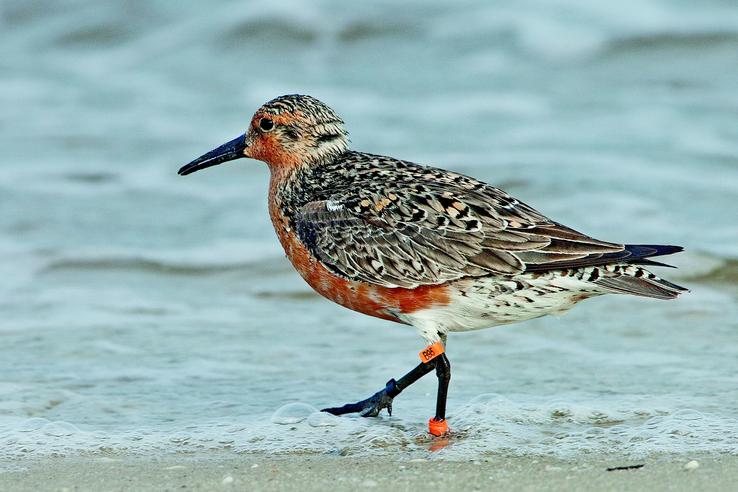An Argentine Senator has introduced a bill into the national legislature declaring B95—the “Moonbird”– a “project of national interest. For Senator Jorge Colazo, B95 “symbolizes the importance for the province of the protection of the environment and wildlife
“Today,” he continued,” we honor a symbol of this care—B95, our international ambassador for the continent. The importance of B95 lies beyond his dramatic history. He represents the commitment of our province to environmental care. Over the years we have worked and will continue to do so to protect and preserve our native species, the continuity of their life and reproduction.”
The total mileage accumulated to date in the wings of B95, after many annual migrations between breeding areas of the Canadian Arctic and wintering in South America, is farther than the distance between Earth and the Moon. He can go 8,000 km (5,000 mi) or more without stopping. Nearly 20 years of age, he is the oldest wild rufa Red Knot ever known. Many places protect red knots, and areas have been recognized internationally for them by the Western Hemisphere Shorebird Reserve Network (WHSRN).
Patricia Gonzalez, the biologist who was part of the team that first banded the amazing bird in Rio Grande in 1995, states that “B95 and other shorebirds are uniting people across the continent. Students from different schools are communicating by Skype. Even if they do not know English, they use translators and manage to communicate.”
B95 was banded in 1995 when he was at least two years old in the Atlantic Coast Reserve, which in 1992 entered WHSRN, by an agreement the Network, when Senator Jorge Colazo was mayor of the city of Rio Grande.
Colazo recalled, “As Charles Duncan, the director of the Executive Office of WHSRN said, ‘I and other colleagues have been working for 20 years on behalf of the wildlife of Tierra del Fuego.’ And I can proudly say today that my daughter, Councilwoman Maria Laura Colazo also defends our wildlife.”

